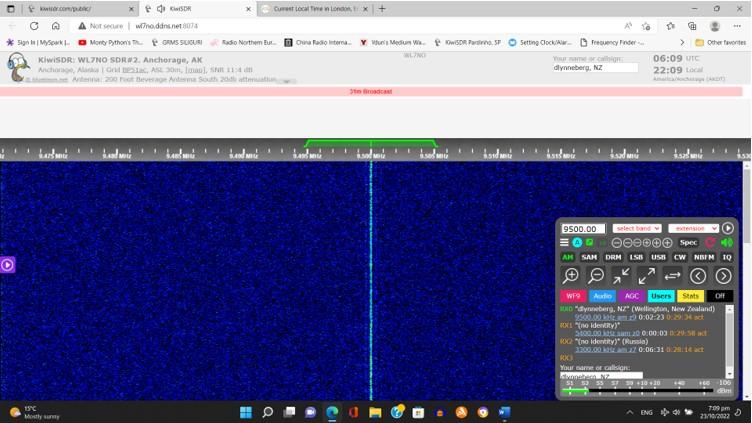Lynneberg, Dene
Low level signal strength on all frequencies. Not sure what mode you were transmitting in, but reception was made in the AM mode with bandwidth of 9.8 kHz apart from 2 brief periods when in CW mode while tuned to 3.3 MHz. 3.3 MHz had modulation patterning but I did not know how to decode or interpret this modulation so I could not compare it to any of the movements you had listed in your movement space dropdown menu.
In your country of reception, I could not change from Canada to Alaska as it wasn't on your dropdown menu list, so I had to leave it as Canada. Where you not expecting or wanting any reports from Alaska. I also tried the Kiwi SDR operated by the New Zealand Radio DX League at Mangawhai in the upper part of the North Island of New Zealand but couldn't receive any of your signals on this Kiwi sdr. I hope my reports may be of some use to you and look forward to receiving your QSL if my reports are considered to be correct
Reception Reports
Expand a row below for details.
| Date | Movement | Media | ||
|---|---|---|---|---|
| Expand | XIII. Mixing Moving Pictures (NBTV) |
 Audio
Audio |
Time
06:05:30
– 06:12:00
Frequency (MHZ)
9.500
Antenna
200 foot Beverage antenna south 20dB attenuation
Receiver
Kiwi SDR: Wl7NO SDR No.2
SINPO
2
5
4
4
3
Note
Signal strength was S3.5 on the S0 to S9+60dB signal strength scale. |